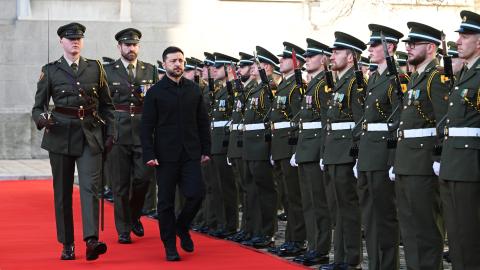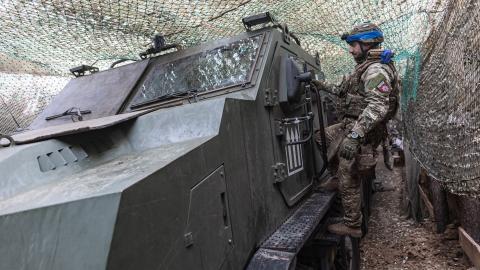Executive Summary
- A look at Russia-Iran drone production: Russia released footage of its Shahed drone plant in Tatarstan. The Kremlin claims it is the largest drone factory in the world.
- Drone warfare update: Russia’s increased production could soon enable it to launch 2,000 drones in a single salvo, according to the German military. Meanwhile, both Russian and Ukrainian drone operators demonstrated an increasing ability to penetrate enemy air defenses.
- Battlefield assessment: The strategic situation remained largely static. But Russian forces have breached the outer security zone of Pokrovsk, a tactically important location for the defense of eastern Ukraine.
1. Battlefield Assessment
The strategic situation in Ukraine remained static last week. Nonetheless, Ukraine’s tactical outlook worsened across multiple flashpoints.
The situation in Pokrovsk, a key location for Ukraine’s defense of the eastern front, is particularly worrying for Kyiv. Some field reports claim that Russian assault teams were able to penetrate Ukraine’s formations in the city because the Ukrainian Armed Forces lacked the infantry manpower to hold the line.
Toretsk and the areas around Novopavlivka and Sumy also saw devastating engagementslast week. Additionally, the Russian Aerospace Forces conducted intensive missile and drone attacks on Ukrainian cities and towns.
The drone warfare component of the conflict continued to evolve. Early indicators suggest that Russian and Ukrainian drone operators have grown increasingly adept at penetrating defensive architectures like drone nets to conduct intelligence operations and attack targets of opportunity. If this trend persists, it could render current trench warfare tactics ineffective—with considerable strategic implications.
2. Russia Releases Footage of Its Alabuga Drone Plant
Russian state media released new footage of the country’s largest drone plant, which the Kremlin claims is also the largest in the world.
Located in the Russian Republic of Tatarstan, 1,050 miles from the front in Ukraine, the Alabuga compound produces the infamous Russian-Iranian Shahed drone baseline. Designated the Geran-2 by Russian forces, the drone has evolved significantly since its inception. Variants now possess stealth features and larger warheads. One is equipped with a devastating 200-pound thermobaric payload. Others boast artificial intelligence features capable of coordinating drone swarms, while some feature Chinese components. The drone even comes in a miniaturized form.
The footage of the plant shows rows of drones painted with dark camouflage. This coloration makes the munitions harder for Ukraine’s mobile air defense teams to detect during nighttime salvos.
Their task is already quite daunting. Last month, the Russian military launched 5,500 Shahed drones at Ukraine, with zero days of inactivity. Ukraine’s air defense units boasted an 86 percent interception rate against these attacks. But the frequency and intensity of Moscow’s drone barrages have pushed these units to their limit. Worse, the German military projectsthat Russian forces will have the capability to launch 2,000 drones in a single salvo before the end of this year.
Russia’s drone production pipeline notoriously relies on child abuse and human trafficking. Russia’s Alabuga Special Economic Zone enlists a significant contingent of young female laborers from underdeveloped nations, particularly in Africa. Under the Alabuga Start program, Russia has employed workers from 44 countries in impoverished regions of the world. Interpol has launched human trafficking investigations in response.


















